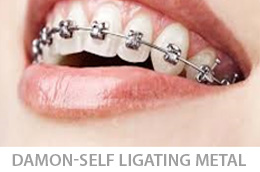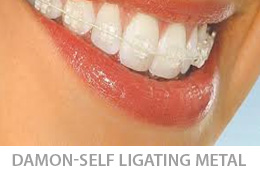: 603-4023-3599


Dental braces (also known as braces, orthodontic cases, or cases) are devices used in orthodontics that align and straighten teeth and help to position them with regard to a person's bite, while also working to improve dental health.


While the age of 7 may seem unusually early to consider braces, this pre-screening will give the orthodontist the opportunity to use preventative measures to possibly correct situations that may lead to braces in the future, and /or advise the parent on future orthodontic treatment planning. Adults seeking orthodontic treatment may consult with their dentist at any time, since it is never too late to consider correcting your teeth.
The initial consultation with the orthodontist is typically a visual evaluation of the patient's teeth and facial structure, with discussion to follow. If the orthodontist requires more in-depth information, or the patient agrees to begin treatment, diagnostic records are then taken of the patient. These diagnostic tools, consisting of x-rays, models of the patient's teeth, and photographs of the patient's face and teeth, are used by the orthodontist to study and formulate a treatment plan to present to the patient.
Braces are used to move teeth into the ideal position and align how they bite together, known as occlusion. Malocclusion is used to describe the misalignment of teeth between the upper and lower dental arches, using the first molars as a reference point.
While some patients may have the ideal bite, they may suffer from varying degrees of crowding or spacing, another factor associated with a misaligned bite. Crowding is a condition that causes the teeth to overlap, rotate, and in some cases, grow into the incorrect position in the mouth, or in more extreme cases, cause the tooth to become trapped in the bone. Crowding may be caused because the dental arch is too small for the adult teeth, or the adult teeth are larger than normal.
Crowding may also be caused by losing the primary or baby teeth early, or retaining them in the mouth longer than normal. These factors may inhibit the adult tooth, forcing it to erupt or grow into an incorrect position. Crowding makes it difficult to brush and floss the teeth correctly, possibly resulting in tooth decay or gingivitis.
Alternatively, varying degrees of spacing may be present, due to smaller teeth or jaw size. The most obvious example of spacing is the diastima, a space between the upper two front teeth, known as the centrals.
Misaligned teeth and an incorrect bite may affect more than just the appearance of your smile. The following conditions may potentially be corrected by orthodontics:
Patients experiencing any of the above symptoms should contact their dentist to determine the cause of their condition. Aesthetics do, however, play an important role when it comes to deciding if braces are right for you. Self-confidence may improve for patients that have concerns with the appearance of their teeth or facial shape.
Many treatment options are available for correcting the look of your teeth and smile.